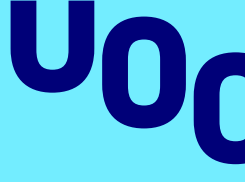Lessons we have learned from the crisis, by Jordi Galí
Has the crisis changed the framework for studying the economy?

“Before the crisis, a particular type of model, commonly known as the New Keynesian model, was widely adopted. This dynamic stochastic general equilibrium model emphasizes nominal rigidities – the fact that wages and prices adjust gradually – which means that monetary policy is non-neutral and can be used to improve resource allocation.”
“These models – and this may seem odd, even surprising, from our current perspective – completely ignored the existence of a financial system. In other words, the models are constructed in such a way that financial transactions never take place. As a result, these models can obviously never generate a financial crisis. They can’t predict a financial crisis.”
“How has the economics profession responded to recent developments? Economists have responded as we might expect them to: by working to incorporate financial frictions in models of this type while maintaining some of their widely recognized virtues.”
“The greatest challenge in developing this new generation of models is to create models in which the financial frictions introduced are capable of generating a financial crisis by themselves.”
“At this point I can assure you that we’re far from reaching a consensus on what model should replace the New Keynesian model – the consensus model before the crisis, adopted by all central banks and international organizations – or how the existing model should be modified.”
